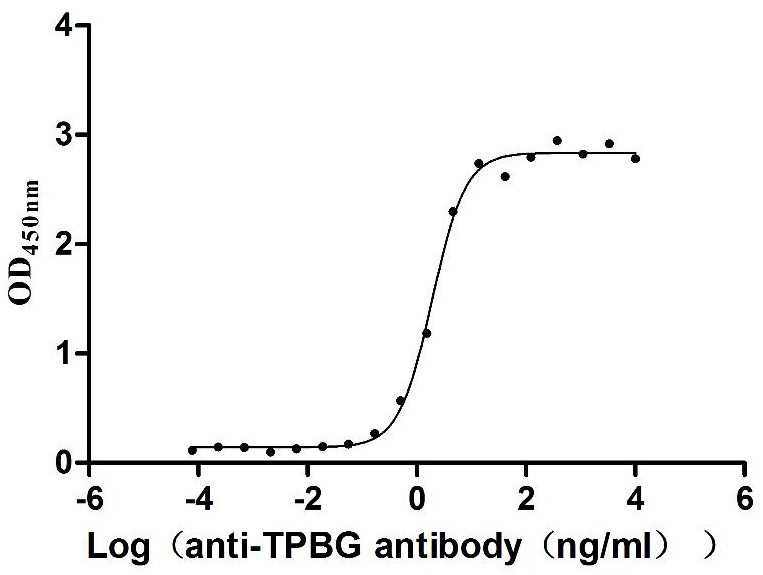Recombinant Human Actin, cytoplasmic 2 (ACTG1)
-
中文名称:Recombinant Human Actin, cytoplasmic 2(ACTG1)
-
货号:CSB-YP001222HU
-
规格:
-
来源:Yeast
-
其他:
-
中文名称:Recombinant Human Actin, cytoplasmic 2(ACTG1)
-
货号:CSB-EP001222HU
-
规格:
-
来源:E.coli
-
其他:
-
中文名称:Recombinant Human Actin, cytoplasmic 2(ACTG1)
-
货号:CSB-EP001222HU-B
-
规格:
-
来源:E.coli
-
共轭:Avi-tag Biotinylated
E. coli biotin ligase (BirA) is highly specific in covalently attaching biotin to the 15 amino acid AviTag peptide. This recombinant protein was biotinylated in vivo by AviTag-BirA technology, which method is BriA catalyzes amide linkage between the biotin and the specific lysine of the AviTag.
-
其他:
-
中文名称:Recombinant Human Actin, cytoplasmic 2(ACTG1)
-
货号:CSB-BP001222HU
-
规格:
-
来源:Baculovirus
-
其他:
-
中文名称:Recombinant Human Actin, cytoplasmic 2(ACTG1)
-
货号:CSB-MP001222HU
-
规格:
-
来源:Mammalian cell
-
其他:
产品详情
-
纯度:>85% (SDS-PAGE)
-
基因名:
-
Uniprot No.:
-
别名:ACT ; ACTB ; ACTG ; ACTG_HUMAN; actg1; Actin; Actin; cytoplasmic 2; Actin; gamma 1; Actin; gamma 1 propeptide; Actin; gamma; BRWS2; cytoplasmic 2; Cytoskeletal gamma actin; Deafness; autosomal dominant 20; Deafness; autosomal dominant 26; DFNA20 ; DFNA26; epididymis luminal protein 176; Gamma-actin; HEL-176; N-terminally processed
-
种属:Homo sapiens (Human)
-
蛋白长度:Full length protein
-
表达区域:1-375
-
氨基酸序列MEEEIAALVI DNGSGMCKAG FAGDDAPRAV FPSIVGRPRH QGVMVGMGQK DSYVGDEAQS KRGILTLKYP IEHGIVTNWD DMEKIWHHTF YNELRVAPEE HPVLLTEAPL NPKANREKMT QIMFETFNTP AMYVAIQAVL SLYASGRTTG IVMDSGDGVT HTVPIYEGYA LPHAILRLDL AGRDLTDYLM KILTERGYSF TTTAEREIVR DIKEKLCYVA LDFEQEMATA ASSSSLEKSY ELPDGQVITI GNERFRCPEA LFQPSFLGME SCGIHETTFN SIMKCDVDIR KDLYANTVLS GGTTMYPGIA DRMQKEITAL APSTMKIKII APPERKYSVW IGGSILASLS TFQQMWISKQ EYDESGPSIV HRKCF
-
蛋白标签:Tag type will be determined during the manufacturing process.
The tag type will be determined during production process. If you have specified tag type, please tell us and we will develop the specified tag preferentially. -
产品提供形式:Lyophilized powder
Note: We will preferentially ship the format that we have in stock, however, if you have any special requirement for the format, please remark your requirement when placing the order, we will prepare according to your demand. -
复溶:We recommend that this vial be briefly centrifuged prior to opening to bring the contents to the bottom. Please reconstitute protein in deionized sterile water to a concentration of 0.1-1.0 mg/mL.We recommend to add 5-50% of glycerol (final concentration) and aliquot for long-term storage at -20℃/-80℃. Our default final concentration of glycerol is 50%. Customers could use it as reference.
-
储存条件:Store at -20°C/-80°C upon receipt, aliquoting is necessary for mutiple use. Avoid repeated freeze-thaw cycles.
-
保质期:The shelf life is related to many factors, storage state, buffer ingredients, storage temperature and the stability of the protein itself.
Generally, the shelf life of liquid form is 6 months at -20°C/-80°C. The shelf life of lyophilized form is 12 months at -20°C/-80°C. -
货期:Delivery time may differ from different purchasing way or location, please kindly consult your local distributors for specific delivery time.Note: All of our proteins are default shipped with normal blue ice packs, if you request to ship with dry ice, please communicate with us in advance and extra fees will be charged.
-
注意事项:Repeated freezing and thawing is not recommended. Store working aliquots at 4°C for up to one week.
-
Datasheet :Please contact us to get it.
相关产品
靶点详情
-
功能:Actins are highly conserved proteins that are involved in various types of cell motility and are ubiquitously expressed in all eukaryotic cells.
-
基因功能参考文献:
- A novel actin gamma 1 (ACTG1) de novo mutation is identified in two sporadic, juvenile, Chinese non-syndromic hearing loss (NSHL) cases using targeted high-throughput sequencing. PMID: 29357087
- Results identified ACTG1 with significant high expression in skin cancer tissue and suggested that ACTG1 can regulate the cell proliferation and migration through ROCK signaling pathway. PMID: 28727228
- a novel heterozygous missense mutation P32S in the ACTG1 gene was identified in a small family with autosomal dominant nonsyndromic hearing loss. The present findings expand our understanding of the phenotypes associated with ACTG1. Specifically, the results of the present study emphasized that mutations in ACTG1 result in a diverse spectrum of onset ages, including congenital in addition to post-lingual onset. PMID: 29620237
- Data reports a recurrent de novo mutation in ACTG1 causes isolated ocular coloboma PMID: 28493397
- We have identified a three-generation pedigree segregating a novel mutation in the ACTG1 gene that causes Baraitser-Winter Syndrome with extremely variable expressivity, leading to an initial diagnosis of isolated AD hearing loss in two members. PMID: 27096712
- we expand the clinical spectrum of the ACTG1-associated Baraitser-Winter cerebrofrontofacial syndrome demonstrating the mild end of the facial and brain manifestations. PMID: 27240540
- Data indicate that F-actin is significantly elevated in septic shock, and F-actin and the F:G-actin ratio are potential biomarkers for the diagnosis of septic shock. PMID: 26754286
- a novel mutation in ACTG1 was found to be co-segregated with hearing loss and the genetic cause of autosomal dominant nonsyndromic hearing impairment in a Chinese family PMID: 26832775
- Three unrelated cases of rare ACTG1 variants in fetal microlissencephaly have been described. PMID: 26188271
- In this study we sought to clarify the detailed mutational spectrum, clinical features, and genotype-phenotype correlations for ACTG1 gene associated autosomal dominant sensorineural hearing loss PMID: 25792668
- The data, for the first time, link ASAP3 with ACTG1 in the regulation of cytoskeletal maintenance and cell motility PMID: 24284654
- The actin/MKL1 signalling pathway influences cell growth and gene expression through large-scale chromatin reorganization and histone post-translational modifications. PMID: 24762104
- the novel variant p.M305T in ACTG1 (DFNA20/26) was selected as a disease-causing variant. PMID: 23506231
- These results showed the biphasic F-actin dynamics in herpes simplex virus 1 neuronal infection and confirmed the association of F-actin with the changes in the expression and activity of cofilin 1. PMID: 22623803
- knockdown of gamma-actin significantly reduced speed of motility and severely affected the cell's ability to explore, which was, in part, due to a loss of cell polarity PMID: 21908715
- Cytoplasmic G-actin concentration is a critical parameter for determining the extent of stimulus-induced G-actin assembly and cell extension. PMID: 21502360
- actin participates in transcription elongation by recruiting Cdk9,a catalytic subunit of P-TEFb, for phosphorylation of the Pol II C-terminal domain, and the actin-Cdk9 interaction promotes chromatin remodeling PMID: 21378166
- RNA polymerase II accumulates in the promoter-proximal region of the dihydrofolate reductase and gamma-actin genes. PMID: 12612070
- the first description of a mutation in cytoskeletal, or nonmuscle, actin; with an autosomal dominant, progressive, sensorineural hearing loss phenotype PMID: 13680526
- A missense mutation in the gamma actin 1 gene causes autosomal dominant hearing loss. PMID: 14684684
- Our data are consistent with the idea that DP assembles into nascent junctions from both diffusible and particulate pools in a temporally overlapping series of events triggered by cell-cell contact and regulated by actin and DP-IF interactions. PMID: 16365169
- Espins do not activate the Arp2/3 complex in vitro, and bundle assembly is not indicative of in-vitro nucleation activity.Our results suggest a novel way to build actin bundles at specific sites in cells. PMID: 16569662
- A major factor in the deafness caused by gamma-actin mutations is an altered ability of the actin filaments to be properly regulated by actin-binding proteins rather than an inability to polymerize. PMID: 16690605
- the present results do not indicate that mutations in ACTG1 are a frequent cause of autosomal-dominant postlingual sensorineural hearing impairment in Norway nor Denmark. PMID: 16773128
- actin and vimentin filaments can interact directly through the tail domain of vimentin PMID: 16901892
- During cell membrane blebbing actin recruitment is involved in cortex assembly. PMID: 17088428
- In both AA and AL renal amyloidosis groups there were significant positive correlations between immunostaining of TGFbeta-1 and alpha-SMA. PMID: 17285762
- IQGAP1 regulates Salmonella invasion through interactions with actin, Rac1, and Cdc42 PMID: 17693642
- In this report we have used mutagenesis of the Talin1 I/LWEQ module to show that the amino acids responsible for dimerization are necessary for F-actin binding, stabilization and cross-linking of actin filaments, and focal adhesion targeting. PMID: 17722883
- analysis of the structural basis of profilin-actin complexes during filament elongation by Ena/VASP PMID: 17914456
- In this study, a novel missense mutation (c.364A>G; p.I122V) co-segregated with the affected individuals in the family and did not exist in the unaffected family members and 150 unrelated normal controls. PMID: 18804074
- Both RPEL peptides of the MAL protein bind to the G-actin hydrophobic cleft and to subdomain 3. PMID: 19008859
- Two novel ACTG1 missense mutations are associated with DFNA20/26 hearing impairment. PMID: 19477959
- audiometric phenotype of the Dutch DFNA20/26 family with a novel mutation in ACTG1 was largely consistent with previous reports on DFNA20/26. All suffered from hearing loss.This is the first known DFNA20/26 family that has experienced tinnitus. PMID: 19548389
显示更多
收起更多
-
相关疾病:Deafness, autosomal dominant, 20 (DFNA20); Baraitser-Winter syndrome 2 (BRWS2)
-
亚细胞定位:Cytoplasm, cytoskeleton.
-
蛋白家族:Actin family
-
数据库链接:
Most popular with customers
-
Recombinant Human Secreted and transmembrane protein 1 (SECTM1), partial (Active)
Express system: Mammalian cell
Species: Homo sapiens (Human)
-
Recombinant Human Prolactin receptor (PRLR), partial (Active)
Express system: Mammalian cell
Species: Homo sapiens (Human)
-
Recombinant Human Somatostatin receptor type 2 (SSTR2)-VLPs (Active)
Express system: Mammalian cell
Species: Homo sapiens (Human)
-
Recombinant Macaca fascicularis Claudin 18.2 (CLDN18.2)-VLPs (Active)
Express system: Mammalian cell
Species: Macaca fascicularis (Crab-eating macaque) (Cynomolgus monkey)
-
Recombinant Mouse Claudin-18.2 (Cldn18.2)-VLPs (Active)
Express system: Mammalian cell
Species: Mus musculus (Mouse)
-
Recombinant Human IL12B&IL12A Heterodimer Protein (Active)
Express system: Mammalian cell
Species: Homo sapiens (Human)
-
Recombinant Human Interleukin-17A (IL17A) (T26A) (Active)
Express system: Baculovirus
Species: Homo sapiens (Human)
-
Recombinant Macaca fascicularis Trophoblast glycoprotein (TPBG), partial (Active)
Express system: Mammalian cell
Species: Macaca fascicularis (Crab-eating macaque) (Cynomolgus monkey)



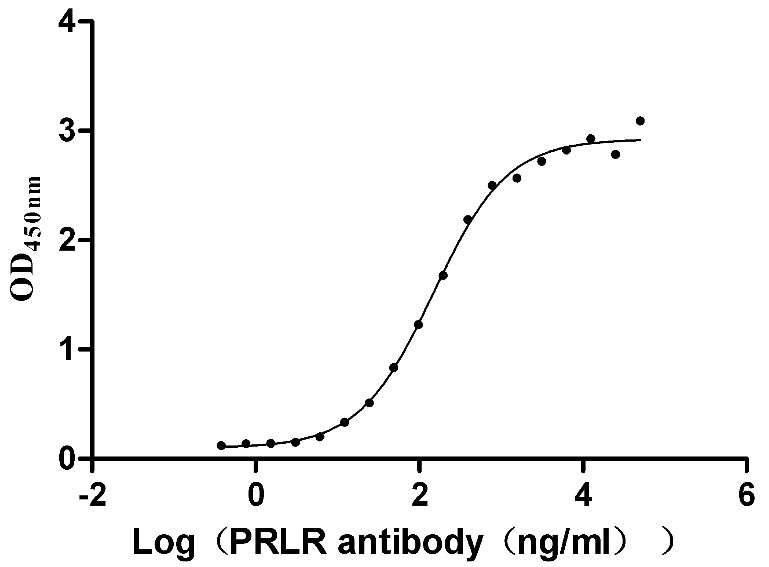
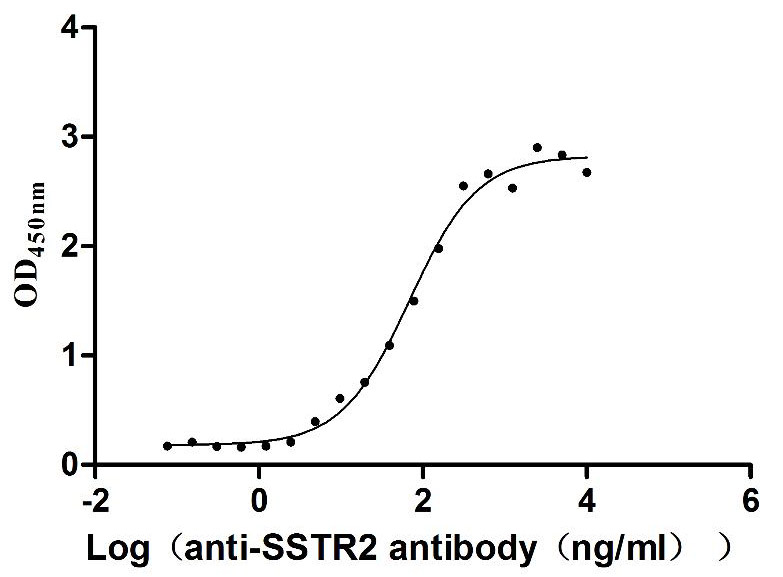
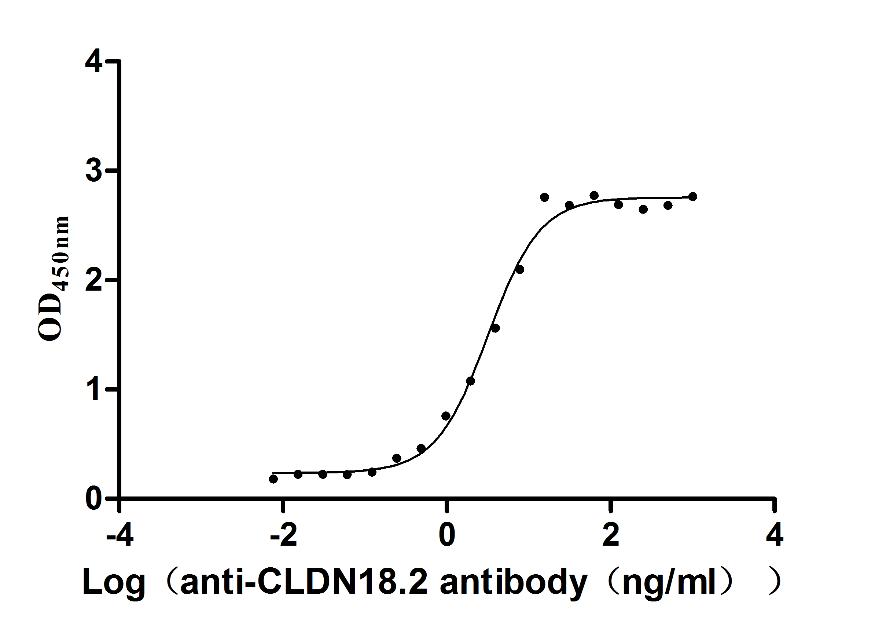
-AC1.jpg)
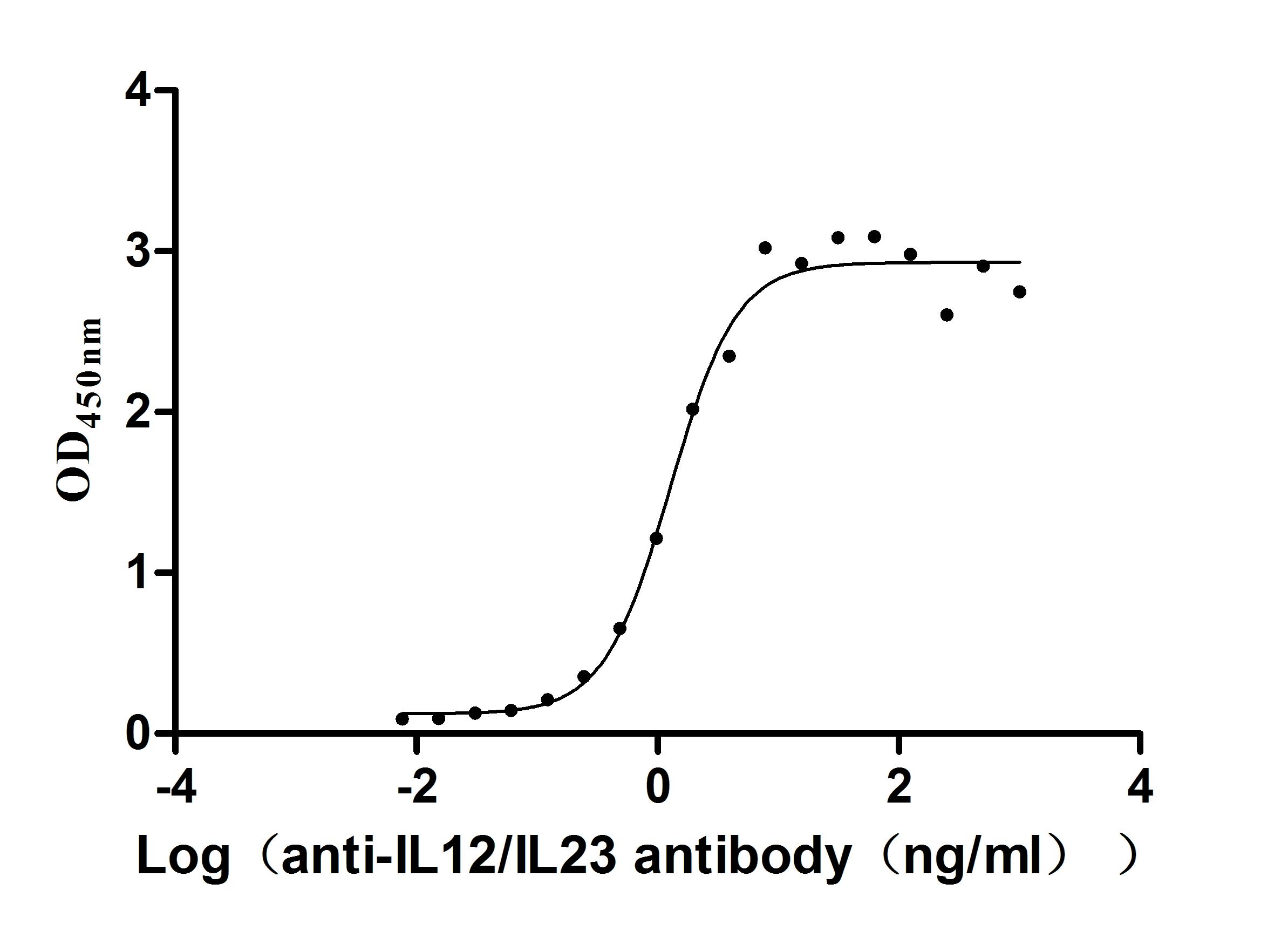
-AC1.jpg)
